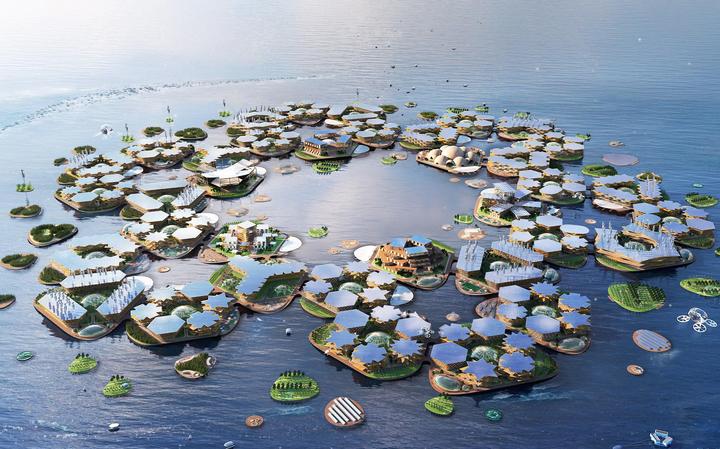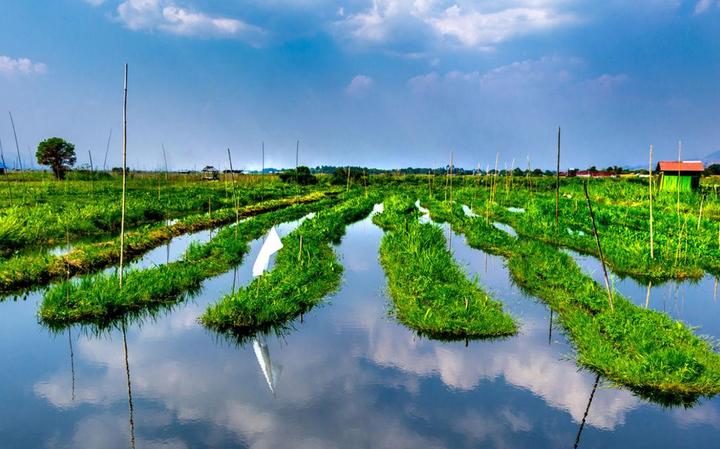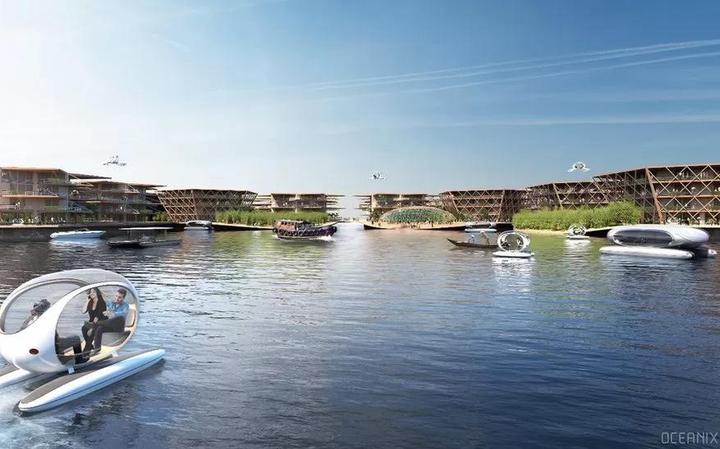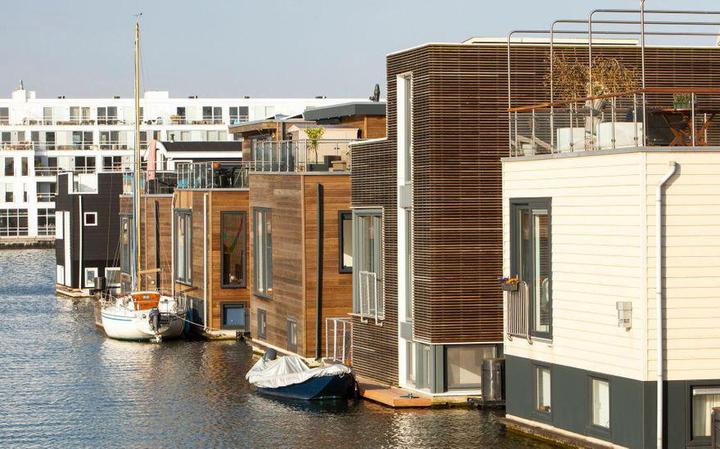The Future of Urban Living

Floating cities have long seemed like a utopian pipedream based on little more than fantasy.
There was a faint drizzle in the afternoon air as I stepped onto the wide, white jetty that marks the boundary of Waterbuurt, Amsterdam’s floating neighbourhood.
Despite the threat of rain, residents, who live in compact, three-storey houses bobbing on a small lake on the Dutch capital’s eastern edge, were busy enjoying the afternoon. A mother and daughter dangled fishing rods from their kitchen window while two young boys splashed in the water, taking turns on a swing strung from a bridge. Benches, bikes and barbecues lined the jetty’s railings, interspersed every 10m or so by a bright orange life ring.
I was led on my tour of this unique semi-aquatic community by Ton van Namen, whose company, Monteflore, masterminded the project. But rather than waxing lyrical about the success of this envelope-pushing development, which now incorporates 100 floating homes, van Namen was more interested in discussing the seemingly endless string of problems that went into creating it. Issues that were once surely a cause of great frustration were now apparently a source of great amusement.
“Oh, and then there was the issue with the zoning plan,” van Namen said as we walked the jetty, the afternoon breeze ruffling the sleeves of his blue shirt and tips of his long grey hair. “Someone wrote all the homes would be a certain height above street level. But of course, here, the homes are going up and down.” He let out such a roar of laughter that the mother and daughter glanced up from their rods, displeased by this disruption to their watery serenity.
It makes sense that the Netherlands is the nation testing the waters when it comes to floating homes, given the country’s green ethos and history of innovative design. The country is also the lowest lying in Europe, making sea level rise a very real threat. But it isn’t just floating houses the Dutch are experimenting with.
The biggest question in people’s minds is if these cities can actually float
Fifty-five kilometres to the south of Amsterdam, Minke Van Wingerden was leading her herd of dairy cows up a gangway and into their state-of-the-art stables, which sidles up to giant tankers and freight ships in the waters of Rotterdam Dock.
“The night before [the cows] came, I didn’t sleep all night long,” she said, holding out a palm-full of hay for one of the sepia-splodged dairy cows to munch on, “but it went so smoothly. They got their sea legs straight away.”
The idea for a floating farm was born after Van Wingerden’s partner, Peter, witnessed the disruption Hurricane Sandy caused to New York’s transport links and food supplies in 2012, noting how supermarket shelves in Manhattan remained empty days after the disaster. Upon returning to the Netherlands, he and Van Wingerden set out to create a farm that would be climate adaptive.
Their farm, which opened in 2019, is home to 40 cows, who roam between a dock-side meadow and the floating facility – the first of its kind in the world. The farm produces milk, cheese and yoghurt (as well as manure), which travel the short distance to customers via bike or electric van; while waste products from the city supplement the cows’ feed, ranging from leftover foodstuff from restaurants to surplus turf from the stadium of local football team, Feyenoord.
“Our location allows us to produce and sell healthy food right here in the city in a very circular, sustainable way,” said Van Wingerden, who also has ideas for a floating vegetable farm and even a chicken farm. “I think there’s a big future for floating farms.”
Witnessing the success people in the Netherlands are having both living and farming on the water, it begs the question of whether we’ll soon be visiting entire cities that float.


